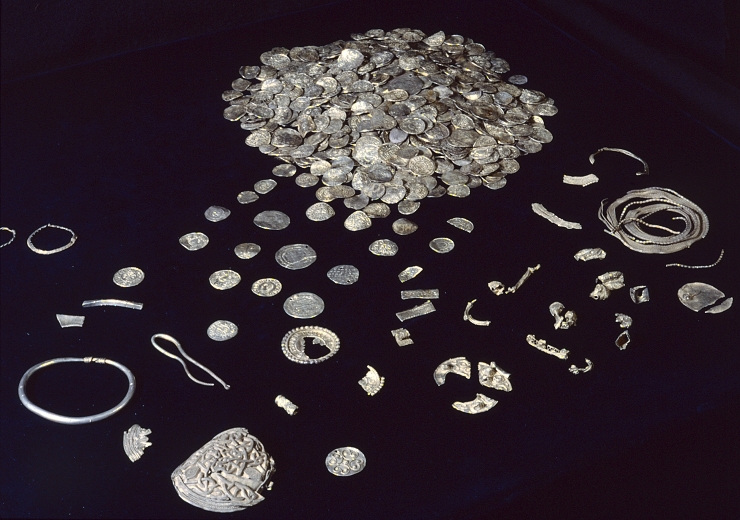Swedish charity funds save unique Viking treasure
Categories: Nálezy nejenom s detektorem ve Skandinávii

A unique 1,000-year-old Viking treasure trove of European coins and artefacts, including Bavarian and Slavic ones, was nearly sold off at private auctions. It was eventually saved by two charitable foundations. It will now be put on public display.
The collection consists of 912 coins and 40 silver objects that were part of the so-called Everlöv Treasure. The youngest coin is dated to 1018 AD, placing it in the Viking Age, while the oldest coin dates to around 800 AD. A large number of the coins come from Bavaria, which is unusual in Swedish hoards. The depot also contains a high number of Anglo-Scandinavian coins, i.e. coins minted by Scandinavian kings in an attempt to imitate English coins. Among the items are several extremely rare artefacts: for example, a pin with intricately interwoven zoomorphic figures decorated with filigree and granulation, a Slavic lunula or a bractate in the form of a jewel struck by Henry II, Emperor of the Holy Roman Empire.
The treasure was found in the 1980s in the southern Swedish province of Skåne inside a wooden furniture-like sideboard. The collection is original and complete in composition, and is not a collection of random objects from different finds. However, the original place of storage is unknown to experts. In the family of the finders, the sideboard was handed down from generation to generation, without its members knowing what a valuable treasure it concealed. After its discovery, it was briefly put on display, and a court case was held that established the treasure as the property of the finder's family. The experts did not have time to study the coins and objects and the whole collection was lost to them for a while. Until recently, when reports surfaced that it would be sold off.
According to the plan, the collection was to be divided into several parts and these were to be sold to various bidders at a controversial auction on Friday 29 April. Instead, it was bought as a whole by the Gunnar Ekström and Sven Svensson Foundations for Numismatic Research. It will thus become part of the Royal Coin Cabinet at the Stockholm Economic Museum.
"It is great news that the treasure can be preserved together as part of our common culturalheritage and will be available for further research," museum chief Cecilia von Heijne told the trade magazine Magasin K. Birgitta Hårdh, professor emeritus of archaeology at Lund University, who initially described the auction as "a great tragedy", also welcomed the news: "It's really good news, I'm so happy about it!" she told the magazine. Since the 1980s, Hårdh has campaigned for the treasure to become state property. I hope it will soon be put on display for people to see," she said.
Ms Gitte Ingvardsson, numismatist at the Lund History Museum, added that the acquisition was the best news in a long time: "I am extremely happy that the treasure will be preserved in its entirety, and I am grateful to my colleagues in Stockholm who have put a lot of effort into ensuring that this story has a happy ending."
Roman Nemec
sources: thelocal.se, magasink.se
The article is included in categories: